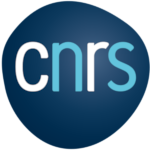Syrte
The SYRTE department - Sytèmes de Référence Temps Espace - belong to Observatoire de Paris - Université PSL and is also associated with the CNRS (National Research Center), the Sorbonne Université and the LNE.
It is a leader in time and frequenciy metrology and is also specialized in Earth rotation, celestial reference frame and history of Astronomy.
SYRTE has a multidisciplinary research activity with transverse expertise in theory, instrumentation and data analysis and various goals from fundamental physics tests to industrial transfers.It is founder membre of Laboratoire d’Excellence du Programme Investissements d’Avenir FIRST-TF.
It has in charge several international services. Associated with the LNE - Laboratoire National de Métrologie et d’Essais - the SYRTE has the responsability of the national reference time and frequence. With the IERS (International Earth Rotation Service), it deliver Earth rotation parameters and other services.
Its teams take part in training and education by giving university lectures and also spread scientific culture by organizing public talks.







